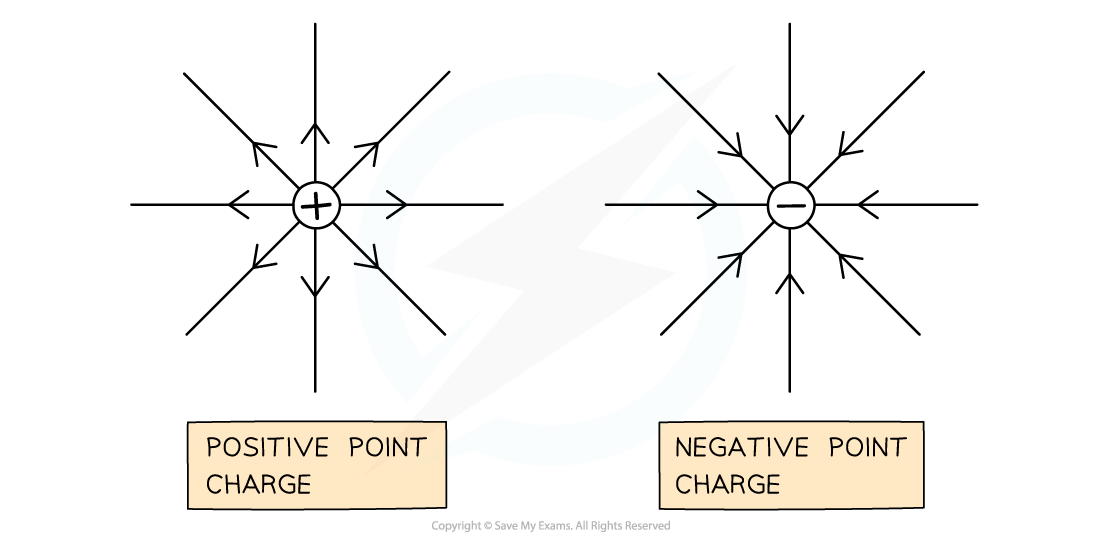Electric Field Strength of a Point Charge (OCR A Level Physics): Revision Note
Exam code: H556
Electric Field of a Point Charge
The electric field strength describes how strong or weak an electric field is at that point
A point charge produces a radial field
A charge sphered also acts like a point charge
The electric field strength E at a distance r due to a point charge Q in free space is defined by:

Where:
Q = the point charge producing the radial electric field (C)
r = distance from the centre of the charge (m)
ε0 = permittivity of free space (F m−1)
This equation shows:
Electric field strength in a radial field is not constant
As the distance from the charge r increases, E decreases by a factor of 1/r2
This is an inverse square law relationship with distance
This means the field strength E decreases by a factor of four when the distance r is doubled
Note: this equation is only for the field strength around a point charge since it produces a radial field

Direction of positive and negative point charges
The electric field strength is a vector Its direction is the same as the electric field lines
If the charge is negative, the E field strength is negative and points towards the centre of the charge
If the charge is positive, the E field strength is positive and points away from the centre of the charge
This equation is analogous to the gravitational field strength around a point mass
Worked Example
A metal sphere of diameter 15 cm is negatively charged. The electric field strength at the surface of the sphere is 1.5 × 105 V m−1.
Determine the total surface charge of the sphere.
Answer:
Step 1: Write down the known values
Electric field strength, E = 1.5 × 105 V m-1
Radius of sphere, r = 15 / 2 = 7.5 cm = 7.5 × 10-2 m
Step 2: Write out the equation for electric field strength

Step 3: Rearrange for charge Q
Q = 4πε0Er2
Step 4: Substitute in values
Q = (4π × 8.85 × 10−12) × (1.5 × 105) × (7.5 × 10−2)2
Q = 9.38 × 10−8 C = 94 nC (2 s.f.)
Examiner Tips and Tricks
Remember to always square the distance in the electric field strength equation!

Unlock more, it's free!
Did this page help you?